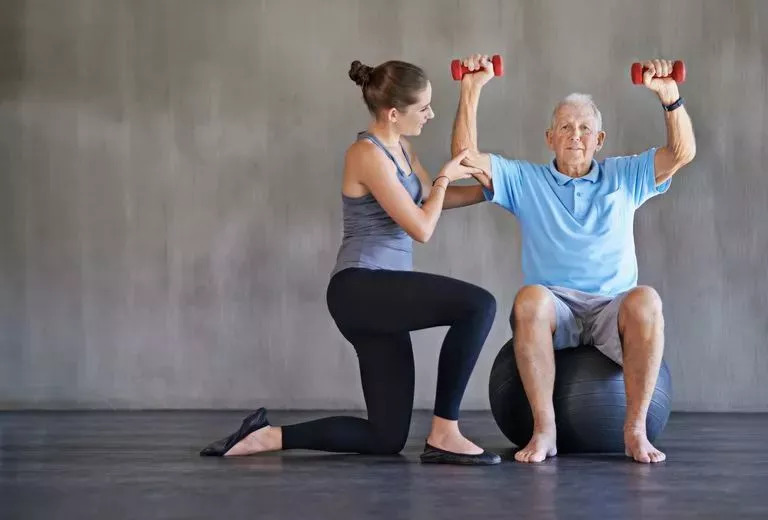Muscle Strength training should be a very important part of rehabilitation. Strength is directly related to functions, which can be improved without adverse effects through planned strengthening exercises. The muscle strength training for stroke is not only the explosive force training of muscle but also the training of endurance. The goal of muscle strength training is to ensure that a muscle or muscle group has sufficient force, strength, and extensibility to complete the intended activity.

Two properties of muscles:
※Contractility
※Malleability
Muscle contractions:
1. Isometric contraction:
When a muscle contracts, the distance between the start and end points does not change.
2. Isotonic contraction:
Eccentric contraction: When a muscle contracts, the distance between the start and end points becomes longer.
Concentric contraction: When a muscle contracts, the distance between the start and end points is shortened.
The isokinetic eccentric exercise has a more specific muscle strength training effect than the concentric exercise mode. For example, the eccentric exercise of the post-stroke patients can improve their concentric ability and the ability to go from sitting to standing more than the concentric exercise alone. That is to say, eccentric contractions of muscles are characterized by lower levels of muscle activation resulting in higher levels of force compared to concentric contractions. Eccentric contraction can also change the structure of muscle fibers and cause the lengthening of muscle fibers to increase muscle ductility. For eccentric and concentric muscle movements, eccentric exercises can generate more joint strength and peak faster than concentric exercises. Muscles are not easily activated when shortened and muscles are easily activated when lengthened, because more torque is generated when lengthened, so eccentric activity is more likely to activate muscle contractility in the early phase than concentric activity. Therefore, eccentric activity should be the first choice for improving the extensibility and contractility of muscles.
Muscle strength is more than just strength. It’s more about the characteristic functions of muscle, neural control mechanisms, and the environment, and is directly related to functional tasks. Therefore, the training of muscle strength must be related to the above factors, and improve muscle behavior through muscle strength training so that it can serve function more effectively. behavior to serve the function more effectively. The muscle strength exercises of the upper limbs emphasize flexibility, and bilateral exercises are very important; the muscle strength exercises of the lower limbs emphasize vertical support and horizontal movement of the body, and the coordination of the ankle, knee and hip is very important.
Strength training of denervated muscle groups (weak): Repeated high-intensity exercises can overcome involuntary activation after brain injury, such as single/multi-joint antigravity/resistance lifting exercises, elastic band exercises, functional electrical stimulation exercises, etc.
Functional muscle strength training is designed to increase strength production, train the intersegmental control and maintain muscle length so that it can generate strength at the length and pattern of contractions associated with a particular activity, including sit-stand transfer, walking up and down steps, squat exercises, stepping exercises, etc.
Perform functional activities to correct weak muscles and poor limb control, such as going up and down stairs, walking on inclines, reaching, picking up, and manipulating objects in all directions.
Read more:
Can Stroke Patients Restore Self-Care Ability?
Application of Isokinetic Muscle Training in Stroke Rehabilitation
Why Should We Apply Isokinetic Technology in Rehabilitation?
Post time: Jun-09-2022






